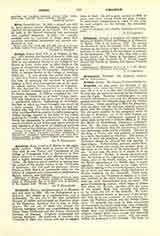

Arriaga, PABLO Jose, S.J., b. at Vergara, in Biscay, 1564, entered the Society of Jesus in 1579, and in 1585 went to Peru, where he was ordained. In 1588 he was appointed Rector of the College of San Martin at Lima, which post he filled thrice in the course of twenty-four years. He visited Europe in 1601, sent to Rome by his superiors. Returning in 1604, he became Rector of the College of Arequipa (1612-15). It was during the period from 1604 to 1622 that Father Arriaga became identified with the task of uprooting the survivals of primitive idolatry in Peru, and accompanied one of the earliest official visitors, Father Fernando de Avendano. He also directed the construction of a college for sons of Indian caciques, and of a house of correction for Indian shamans. In 1620 he completed his “Extirpacibn de l’Idolatrfa en el Peru” (Linea, 1621). The year following he was again sent to Europe on a confidential mission. Embarking at Portobello, the fleet to which his vessel belonged was struck by a fierce tempest. The ship on which he had embarked was, with four others, beached and wrecked. After untiring efforts to comfort his fellow-passengers, Father Arriaga expired at the helm of the vessel, grasping the crucifix, which he had been holding up before his companions in misfortune. He deserves special attention as one of the most active promoters and organizers of the search for idolatrous survivals in Peru and of the Christian education of the Indians.
AD. F. BANDELIER

